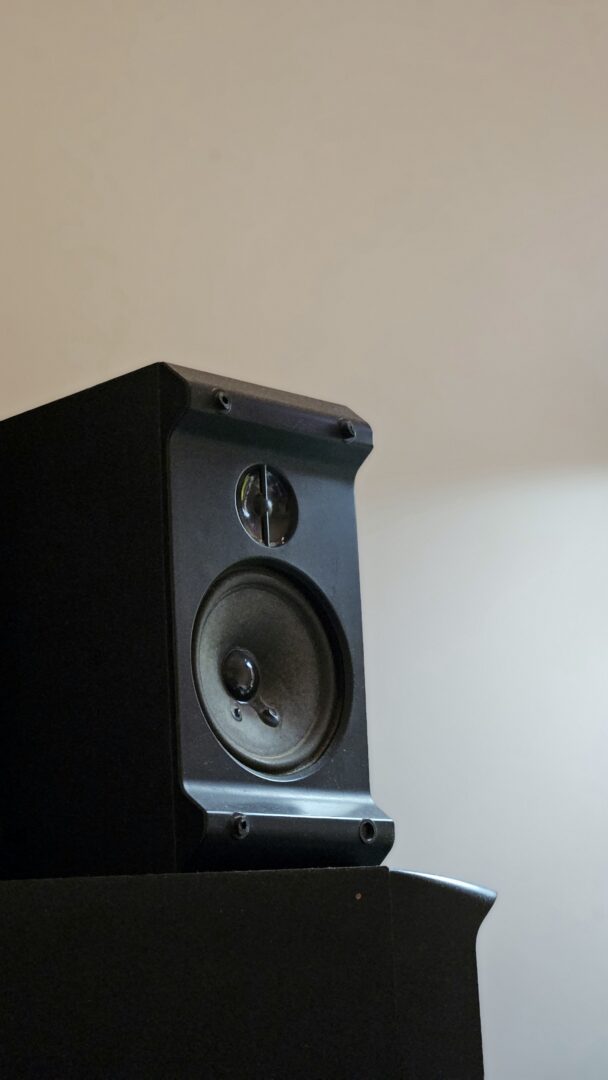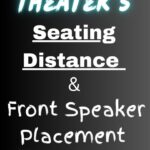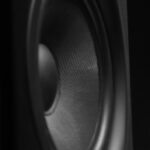5 Home Theater Tips I Wish I Knew Beforehand
5 Home Theater Tips I Wish I Knew Beforehand

How’s it going everybody?
Hope you’re all doing well.
Anyways today I wanted to share with you 5, hopefully useful, home theater tips regarding important things to know beforehand — should you be interested in creating your very own home theater.
These are basically the things I wish I would have known at the start of my home entertainment journey that ultimately, probably would have saved me a lot of time and hassle.
Home theater can undoubtedly be a fun pastime for many, and it’s certainly something that can take one’s movie nights to the next level, but if not done right, it can bring about quite a bit of confusion and even irritation
So in the spirit of saving you that same inconvenience and without wasting any time, let’s get right into it with these 5 ideas.
Speaker Type & Placement Has a Huge Impact on Sound
So first things first, the type of speaker you use can undoubtedly have a major impact when it comes to your enjoyment in sound quality.
For example, using a speaker with not enough wattage in a larger room can result in you either not being able to hear the sound at comfortable level, or the sound being perceived as tinny all together.
What’s bad about this is that people sometimes turn the receiver up past recommended levels just to get an appreciable audio level, but this puts unnecessary duress on the speaker which can lead to damage and directly affects how long speakers last.
So how do you pick?
My recommendation is that for an average sized room ( 11 x 12 feet) you’ll ideally want to look for a speaker with a wattage of at least 50 watts.
In a small room, less wattage isn’t as noticeable at high volumes, but if it was a larger living room for example, then it can be helpful.
The more watts, the better I’ve generally found speakers play at those higher levels without stress (but again, it depends)
Another thing you’ll want to look for is a speaker with a high sensitivity.
Sensitivity is basically a measure of how easy it is to drive power into that speaker, and the higher the sensitivity, the louder it can get with less power.
But the thing is that’s only part of the equation because placement is also important.
When it comes to placement, there’s also a few things you’ll want to be aware of.
Let’s say for example you want to use a 3.1 setup. That’s where you have a left & right speaker, a speaker in the middle called a center speaker, and the component that handles bass called the subwoofer.
In this case, you’d want the center speaker in line with the left & right, and all of them at relatively the same height.
The left & right speaker should also be at equal distances away from the center speaker.
If you were to go with a 5.1 system, where you use an additional surround left and surround right speaker, then placement for those is actually a little more flexible.
Ideally I’ve found they work great at least 2 feet above ear level when seated.
However this isn’t set in stone and if not possible in your current room, then 1 foot or even ear level is fine.
Just try not to go below that because lower than ear level breaks cohesion of the surround sound.
There’s also concept of toe in & toe out to keep in mind, which are basically terms that refer to the angle of the speaker.
Turning the speakers inward toward the listener is called toe in, and turning it more so away from the listener is referred to as toe out.
This too has an effect on sound, and you can use this to even further customize the sound in your particular room.
There’s of course many more things that have an effect on your sound quality including calibration, amount of speaker drivers, and even room seating for example; but the general crux is that for exceptional sound, speaker placement and choice is among the top in terms of importance.
https://easyhometheater.net/home-theater-seating-ideas
A Subwoofer That Can Go Deep Adds Tremendously to the Experience
So we talked about how important a role choosing the proper speaker is for enjoyment of your content, but the subwoofer is yet another piece to the puzzle that’s just as important.
The job of a subwoofer is to produce that deep bass that you not only hear but feel.
For example a major part of what makes going to movies so enjoyable is in large part, attributed to the emphasis those gigantic subwoofers add to the action that’s happening on screen.
This is an example of it being done right however, and an improper sub can just as easily be the cause of your experience being subpar.
I know from experience I’ve had subs that were too small or underpowered for my room in the past,
This would cause the driver to rattle when turned up not to mention provide underwhelming bass
So when choosing a subwoofer, you’ll want one that goes as deep as possible.
Though it’s not the only important factor, the deeper the bass the better since it’ll provide that much more impact in output without struggling.
This range of sound output is a number measured in hertz, shortened to Hz, and gives you a general idea of what the sub is actually capable of.
You’ll want the Hertz to be as low as possible.
My recommendation is look for a sub that can go to at least 30Hz adequately.
From my experience, that’s around the point where you get significant output in movies, though there is often a measurable amount of substance in the 20Hz and below range too.
But 30Hz is a good starting point I feel.
Another thing you’ll want to take into consideration is the wattage and that actually can be a little tricky.
Wattage is basically a measure of how much power the sub uses when it comes to output and can be a really good way to guage just how powerful it actually is.
Here’s the problem though and why I said it can sometimes be tricky; wattage is often depicted as peak wattage or what it’s theoretically capable of at it’s max.
You typically wouldn’t, if ever, play near this volume so peak wattage isn’t necessarily the best indicator of every day performance.
What is a good indicator though is what’s known as the RMS, or root square mean.
This is basically a measurement of the continuous amount of power the subwoofer is capable of.
The higher the RMS number, the better in my opinion, though it does depend on the room since the same sub can sound different depending on the room it’s in.
That said, I’ve found a good RMS around 200 rms since I’ve noticed a decent amount of continuous bass output around that point.
But again, that’s not set in stone either since there’s lots of variables when it comes to sound.
You also have the option to use 2 subwoofers as that will also give you a much more tangible amount of bass. If done right, 2 subs can add a lot of dynamism to a movie night.
Using a Surge Protector is Probably a Good Idea
Here’s something I especially wish I knew before getting into home theater; surge protectors are extremely important.
The reason I say this and to make a really long story short, a bad lightning storm rolled through my area a long time ago and basically ruined all of my equipment that was plugged into the wall.
This was years ago when I was just getting into the realm of audio, but it was and still is devastating to think about nonetheless.
If I knew then what I do now, I certainly would have used one to spare my equipment. So from me to you, using a surge protector just might be a solid idea.
https://easyhometheater.net/25-of-the-worst-home-theater-mistakes
Some Movies May Not be Mastered Appropriately
Something else that I’ve actually come to the realization of as of recent is that it’s actually possible for the sound mixing of certain movies to not be mastered appropriately.
This has happened on only a few occasions, but being the audio enthusiast that I am, after hours of tinkering with my settings to no avail, I eventually decided to reach out to someone within the industry.
I thought my bass seemed boomy and the dialogue of the actors seemed recessed, so I figured I’d see what they thought.
They told me that while rare, there can sometimes be errors in the final mastering process that miss editing, and make it into the final presentation.
In summation, the reason why this is important to keep in mind is that even if it seems like all your settings seem fine for all but one movie, then it is possible that while unlikely, it could be due to just that particular movie.
Be Aware You Might Get The Temptation To Upgrade Often
Lastly something I really wish I knew before getting into this hobby is that temptation is very real.
All too often l’ll get a new speaker or subwoofer that seems absolutely awesome at the time, only for a new model to come out just a few months later; resulting in me upgrading to that and then so on.
I’ve ultimately learned that it’s not only a continuous cycle since obsolescence is inevitable, but if you’re genuinely happy with what you have, then don’t feel forced to upgrade unless you really want to.
Of course there’s always going to be the new shiny thing at some point, but appreciating what you currently have is really what’s most important — and sometimes the difference between the new & old models isn’t large enough to warrant an upgrade immediately anyway.
So again, if you get something and you’re happy with it, that’s really what matters in the end since that’s truly what home theater is all about.
https://easyhometheater.net
About Me

Jay
Hey everyone it’s nice to meet you. I'm Jay, writer & founder of the site Easy Home Theater. I've been with this hobby of home entertainment for many years now. I decided to create this site to be a helpful resource, and share everything that I've learned from personal experience with you. I also happen to be a huge gamer, lover of all things tech related, and a major fitness buff (love weightlifting)
Contact: Contact Jay
Facebook: https://www.facebook.com/Easyhometheater/
X: https://x.com/easyhometheater
Pinterest: https://www.pinterest.com/easyhometheater/pins/
Instagram: https://www.instagram.com/easyhometheater/
Followit: https://follow.it/easy-home-theater
Bluesky: https://bsky.app/profile/easyhometheater.bsky.social







Leave a Reply